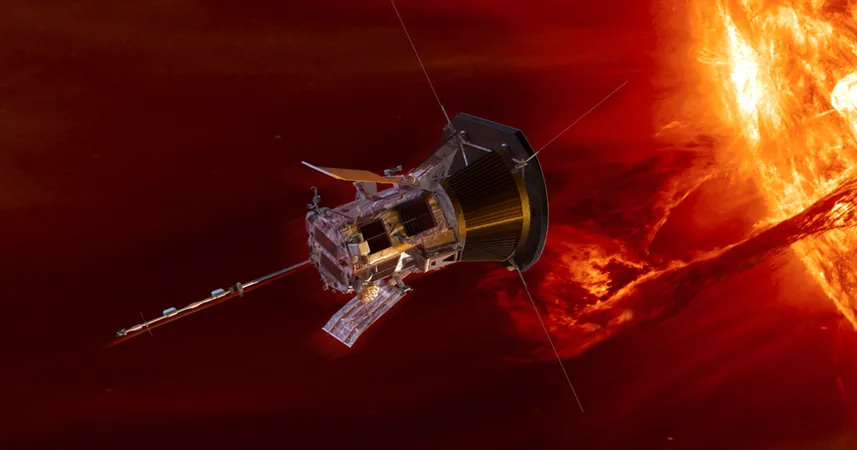
Parker Solar Probe Breaks Records and Unlocks Secrets of the Sun!
2024-12-30
Author: Jacob
Introduction
The sun is a celestial giant, a burning ball of gas that is crucial to our existence, yet it remains shrouded in mystery. NASA's Parker Solar Probe is set to change our understanding of this star as it embarks on groundbreaking discoveries. This spacecraft recently achieved an extraordinary milestone by traveling closer to the sun than any previous human-made object.
Mission Overview
Launched in 2018, the Parker Solar Probe was designed at the Johns Hopkins Applied Physics Laboratory with the ambitious goal of exploring the outer corona of the sun. According to Nour Rawafi, the project scientist for the mission, the probe is on a quest to unlock the secrets surrounding solar activity, particularly the powerful flares and coronal mass ejections that significantly influence space weather—and, by extension, life on Earth.
Importance of Understanding Solar Activity
Space weather events can disrupt telecommunication satellites and pose risks to astronauts, making it vital for scientists to understand the sun's behavior. "We're living within the atmosphere of the sun, known as solar wind. Whatever the sun does affects us significantly," Rawafi explained. This knowledge will aid not just in understanding Earth’s climate but also in evaluating conditions on other celestial bodies, such as Europa and Mars, which are also influenced by solar winds.
Technological Innovations
Curiously, the journey of the Parker Solar Probe wasn’t short of challenges. The idea for such a mission dates back to 1958, but it wasn't until this decade that the technology to safely navigate close to the sun was developed. A cutting-edge heat shield made from a specialized carbon foam protects the probe from the extreme temperatures it encounters—reaching up to 1,900 degrees Fahrenheit while keeping the internal systems nearly at room temperature.
Overcoming Challenges
A nail-biting moment arose when the Parker Solar Probe lost contact with mission control while approaching the sun. Team members anxiously awaited a signal to confirm that everything was nominal. After several tense days, the probe sent reassuring messages, indicating it had successfully completed its closest approach and was functioning well.
Looking Ahead
As scientists prepare for the first wave of data to be received in January, anticipation runs high. "It's like being spoiled children; we can't wait every three months for fresh data!" said Rawafi. This influx of information will not only enhance our solar knowledge but may also provide unexpected surprises and revelations about our star.
Conclusion
Exciting times lie ahead for the Parker Solar Probe mission, as it strives to deliver valuable insights about the sun. What new secrets will it unveil? Stay tuned, because the search for understanding our closest star is just heating up!



 Brasil (PT)
Brasil (PT)
 Canada (EN)
Canada (EN)
 Chile (ES)
Chile (ES)
 Česko (CS)
Česko (CS)
 대한민국 (KO)
대한민국 (KO)
 España (ES)
España (ES)
 France (FR)
France (FR)
 Hong Kong (EN)
Hong Kong (EN)
 Italia (IT)
Italia (IT)
 日本 (JA)
日本 (JA)
 Magyarország (HU)
Magyarország (HU)
 Norge (NO)
Norge (NO)
 Polska (PL)
Polska (PL)
 Schweiz (DE)
Schweiz (DE)
 Singapore (EN)
Singapore (EN)
 Sverige (SV)
Sverige (SV)
 Suomi (FI)
Suomi (FI)
 Türkiye (TR)
Türkiye (TR)
 الإمارات العربية المتحدة (AR)
الإمارات العربية المتحدة (AR)